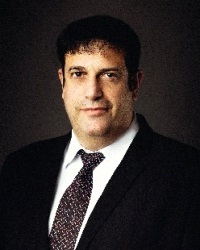
Prof. Amir Eliezer
AMPP Chair Board of Directors
|
Topic:
AMPP Towards its Future - Stronger Together
Affiliation:
AMPP Chair Board of Directors
Director Corrosion Research Center
Nano-Bio & Advanced Materials (SCE), Israel
Abstract:
AMPP is almost three years old since the new organization formed in 2021 from the merger of the legacy NACE International (corrosion engineering) and SSPC (protective coatings) membership societies. AMPP Combines 145 years of NACE and SSPC’s corrosion control and protective coatings expertise, resources, and member services. Single point for industry’s leading certification programs, built to serve global membership as well as expanded membership brings opportunities for more collaborative efforts and advocacy influence. In addition AMPP is focusing on professional networking, globally, with a mission of advancing materials performance to protect society, assets, and the environment.
AMPP’s Chairman of the Board, Amir Eliezer, will address the value of the new AMPP organization to anyone that plays a role in protecting assets from corrosion. The lecture will provide an overview of AMPP towards the future as well as the insights of our global members, values ,new challenges and opportunities..
Biography :
Prof. Amir Eliezer is the Chair of AMPP - Association for Materials Protection and Performance) Board of Directors.
Has studied BSc, MSc, PhD in Materials Engineering (Summa Cum Laude) and an additional M.B.A. He has received several awards and recognitions including the H.H. Uhlig 2013 award.
He has published more than 250 scientific publications and has presented over 160 invited seminars and lectures He has a vast range of experience and expertise in different technologies of medical implants and medical oriented surface manufacturing devices. He gained expertise within the Automotive Industrial Innovative products with leading companies such as Volkswagen, General Motors and Fiat on advanced materials, light structures, and nanomaterials. He is the former President of the WCO (World Corrosion Organization- U.N. NGO ,and NACE International Director of European Area. He serves also as an elected deputy mayor and on several national and international committees.
|
|
|
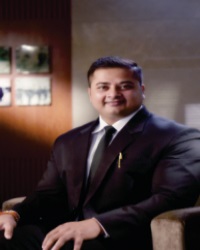
Dr. Ambrish Singh
Professor
|
Topic:
Marine Corrosion Inhibitors and Coatings used to Protect Metals
Affiliation:
Professor
Department of Chemistry, Nagaland University,
Lumami Headquarters, Zunheboto-798627
Abstract:
Metals including iron, copper, zinc and their alloys are used in many industries. They exhibit good mechanical and structural properties, high significance, high thermal conductivity, and good environmental stability. The metals are often exposed to corrosive solutions that deteriorate their desirable properties. Several methods have been utilized to protect the metals from the corrosive solutions, including the use of inhibitors and coatings. Inorganic compounds such as phosphates, nitrites, arsenates, tetraborates and chromates as well as organic compounds with heteroatoms, multiple bonds have been used as corrosion inhibitors. Traditional inorganic inhibitors oxidize the metal surface to form an impervious film that impedes aggressive agents in the environment from reaching the metal, while organic inhibitors adsorb onto the metal surface via heteroatoms, such as S, O, N, aromatic ring p electrons, and multiple bonds. Several reports have described the use of polymers as moderate coating materials that are also cost effective. Use of polymers with guar gum, and nano particles has higher effect on the deterioration of the materials.
Biography :
Dr. Ambrish Singh is working as Professor in the Department of Chemistry, Nagaland University, Lumami, Nagaland, India. He worked in the School of New Energy and Materials, Southwest Petroleum University, China for 10 years before coming to Nagaland. Dr. Singh is included as a Fellow in the Royal Society of Chemistry (FRSC). His research interests are mainly focused on corrosion, electrochemistry, green chemistry, quantum chemistry, smart coatings, polymers, nano-materials, composites, and petroleum engineering. He got the prestigious Sichuan 1000 Talent Award from the Sichuan government, China for his outstanding research contributions as a faculty. He got the President’s Award for exceptional post-doctoral research work.
He also received the Young Scientist Award from UPCST, Lucknow, India. He has published more than 160 SCI peer-reviewed research papers in high impact journals. He is acting as reviewer for more than 43 high impact journals and editor for few journals. Dr. Singh has been invited to present his work in several national and international conferences, seminars and workshops. He has drafted five patents based on his new and innovative findings and awarded with one in China. He was a consultant to KFUPM, Saudi Arabia for an international project. He is the member of ISCA, NESA, AMPP, SPE and ACS. His research paper citations are over 9300; H-Index of 48 and I10-Index of 113.
|
|
|

Anant Rubade
Vice President
|
Topic:
Managing Challenges in LNG Station Infrastructure and Corrosion Control in CGD Networks
Affiliation:
Vice President, Technical Services, AG&P Pratham
Abstract:
The modern energy landscape is witnessing a dynamic shift towards cleaner and more sustainable sources of fuel. Liquefied Natural Gas (LNG) has emerged as a prominent contender in this transition, offering an environmentally friendly alternative to conventional fossil fuels. However, the deployment and maintenance of LNG stations, as well as the distribution networks of Compressed Natural Gas (CNG) come with their set of challenges and complexities. The purpose of this talk is to shed light on the multifaceted issues surrounding LNG stations and corrosion within CGD networks. LNG station infrastructure poses unique challenges related to safety, storage, regasification to ensure seamless and secure operations. Additionally, the extensive pipelines and distribution networks in CGD systems are susceptible to corrosion, which not only affects the network's integrity but also poses environmental and safety risks.
Biography :
As a young achiever, he is leading the Technical Team as Vice President at the growing giant CGD company, AG&P Pratham. He is a dynamic and accomplished professional who has left an indelible mark in the field of energy infrastructure development. His one of the notable achievements is the successful commissioning of 11 LCNG (Liquefied Compressed Natural Gas) stations across authorized Geographical Areas (GAs). He has established his footprints on notable projects with the big Industrial giants, like the CBM Projects at Reliance Industries Ltd., CGD project at MGL, and CNG/LCNG projects including NG pipeline networks at AG&P Pratham. Under his abled leadership, the team has implemented Digital technologies such as SCADA, GIS, Application based As-Built network tracing (QCM), Digital Audit Module, SAP, Pipeline design using Synergi etc. in AG&P.
|
|
|
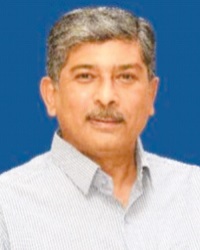
Avinash Shrikhande
Cluster President
|
Topic:
Safety, Reliability and Integrity of Pipelines - Business Perspective
Affiliation:
Cluster President of RIL's Nagothane Manufacturing Division, Patalganga Manufacturing Division and Ethane Pipeline O&M in Maharashtra
Abstract:
Many pipelines contain natural gas, oil, biofuels or other hazardous substances. This creates the potential for fiery accidents involving explosions and spills. While it's true that pipes carry fuels more safely than other modes of transportation, no one should overlook the importance of pipeline safety.
Pipeline integrity is the degree to which pipelines are free from defect or damage. Maintaining integrity keeps pipelines safe for use throughout their lifecycle (from design to decommissioning)
Well constructed, carefully monitored and properly attended, pipelines can be a safe, environmentally sound and economic means of transport. Best practices prevents Pipelines from various hazards.
Biography :
He has undertaken various roles like head of operations, Head of Technical Services as well as Project Manager for commissioning of India's First PTA Plant at Patalganga, Maharashtra.
In his tenure, he has worked on key strategic initiatives like Privatization of acquired IPCL sites, throughput optimization, Technological Integration Projects, Streamlining of Pipeline Operation, liaising multi-union negotiations, Community partnership initiatives for amicable Co-existence etc.
|
|
|
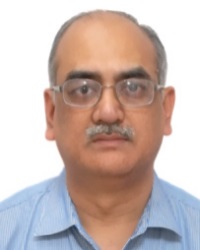
Dr. ANUJ MAHESHWARI
Cluster President
|
Topic:
Materials in Concrete
Affiliation:
Reliance Industries Limited, Reliance Corporate Park,Thane- Belapur Road, Ghansoli, Navi Mumbai
Abstract:
Concrete, Self Compacting Concrete, High Performance Concrete, High Strength Concrete, High Volume Flyash Concrete, SFRC, Use of alternate materials in Concrete etc. Sustainability in Concrete, Durability of Concrete. Waterproofing; Repair and Rehabilitation of Concrete structures.
Biography :
B. Tech (Civil Engg.) - IIT – Kanpur (1989), M.E. (Structures) – University of Roorkee – 1991;
Ph.D. (IIT Delhi) – Concrete Technology, Feb, 2015
Started Career as Lecturer in Civil Engineering – Engineering College Kota (Rajasthan).
Worked with
Unitech Prefab Ltd – 1995 - RMC
ACC Concrete – Heading North (Delhi NCR) – RMC div
· IJM – SCL JV, Hyderabad – RMC Div
· Ashoka Buildcon Limited – Pune – RMC Div
· UltraTech Cement Limited – RMC Div - Vice President – Technical – All India Head(Technical)
· Reliance Industries Limited –
o Procurement & Contracts – Category Manager -
Concrete Procurement – Vice President
o Concrete, Waterproofing, Repair & Rehabilitation -
GMS Core Engineering (CSA) – Vice President
|
|
|
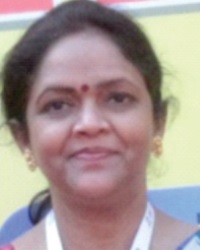
Dr. Jaya Rawat
Deputy General Manager
|
Topic:
Corrosion in Hydrogen pipeline transportation
Affiliation:
Deputy General Manager BPC
Abstract:
Hydrogen is the cleanest source of energy to mitigate growing environmental concerns worldwide. Therefore, it is utmost important to develop hydrogen value chain Production, Storage, Transportation & Utilization as a part of decarbonization strategy. Among its value chain, cost effective long distance bulk transportation holds key for distribution of clean energy.
As on today, pipeline is the best economically suitable means of natural gas transportation. However, its exploitation in repurpose mode for transportation of pure hydrogen or its blend with natural gas is limited due to limited knowledge base w.r.t. hydrogen impact on pipeline metallurgy. The primary challenge being embrittlement of metals due to infusion of atomic hydrogen (H) into the steel matrix thereby causing strain in the material which may ultimately lead to failure of the pipeline. Hence, re-purposing of existing natural gas pipeline network for hydrogen/H2-NG blend transportation and distribution demand critical investigation to establish pipeline reliability and safety. In view of this, this presentation focuses on the gap areas and provides key recommendations for repurposing the existing natural gas pipeline for bulk as well as blended hydrogen transportation.
Biography :
Experience in the area of Corrosion & Research
Corrosion failure analysis Pipeline internal corrosion
Development & Commercialization of cost effective corrosion inhibitors and additives
Corrosion due to oxygenates used fuels on automotive parts
Processing high tan crudes using corrosion inhibitors
Rust preventive/corrosion protective coatings/paints
Developing innovative techniques to monitor corrosion in non-aqueous media Microbiological corrosion CPublications & Patents: 95 in International and national Journal and book chapters, 12 patents granted and 3 filed Member of NACE/AMPP
Reviewer of many research journals of Elsevier Publications, guided Ph.D. and M. Tech students, Delivered talks at various conferences, institutes and National/International Forums, Received prestigious award of Best Ph.D. Best Paper and Excellence in Corrosion Science, Best Lab award from NACE, Best paper awards from NCCI, Petrotech award for Best Innovator, Frost & Sullivan awards for research projects etc. Coordinated research based industrial projects with IIT Madras, ICT Mumbai, IICT Hyderabad, M.S. University Vadodara, Osmania Agricultural University Odisha, BITS Plani, Goa Campus and other PSUs like EIL R&D for various research developmental projects.
|
|
|
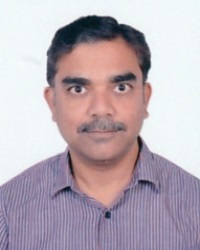
Kamlesh Chandra
Scientific Officer
|
Topic:
Corrosion assessment of alternate materials for nitric acid application in nuclear reprocessing plants
Affiliation:
Scientific Officer – G Bhabha Atomic Research Centre
Abstract:
Austenitic stainless steel (SS) 304L is currently the preferred material for critical components in reprocessing plants. These components are exposed to highly corrosive process fluid consisting of boiling nitric acid that contains oxidizing fission and corrosion products. If the operating potential of the process medium increases beyond the transpassive potential of SS, severe intergranular corrosion (IGC) of even non-sensitized SS occurs due to transpassive dissolution. This has led to failures of SS 304L tubes of thermosyphon evaporators. To overcome the limitations of austenitic SSs in such environments, alternate materials (Titanium and Zirconium based alloys) have been envisaged for use in reprocessing plants. Ti-Al-Zr alloy and Zircaloy-4, both developed indigenously in India, can be considered for the tube material in thermosyphon evaporators. Corrosion evaluation of these materials were done using immersion test in three phases of nitric acid and electrochemical tests. These results were also compared with that obtained for SS 304L exposed under similar conditions. Based on these investigations, it was concluded that both Ti-Al-Zr and Zircaloy-4 are suitable for use in boiling nitric acid, especially when it contains high concentration of oxidizing ions
Biography :
B.E. in Metallurgy branch from B.I.T. Sindri in 2001
· Joined BARC in Materials Group in 2002
· Completed Ph.D. from IIT Bombay in 2012
· Post-doctoral research at Federal Institute for Materials Research and Testing, Berlin for 2 years under Adolf Martens Fellowship in 2013
· Student award for the best Ph.D. thesis for year 2012 by NACE, India, S.K. Seshadri Memorial Mascot National Award 2012, by The Electrochemical Society of India, DAE Award – Young Applied Scientist and Technologist Award 2009, Homi Bhabha Gold Medal Award (2002) in Metallurgical Engineering discipline.
· Has about 75 publications including journal papers, conference proceedings/presentations and book chapters
· Specializes in corrosion and its protection, aging degradation of materials and its control, and failure analysis.
|
|
|
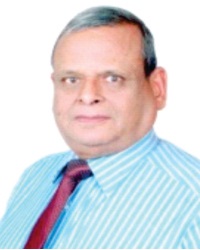
Dr. R. C. Prasad
Former HAG Professor IIT Bombay
|
Topic:
Integrity Assessment of structures in Hydrogen Service Environment using Fracture Mechanics and Failure analysis
Affiliation:
Former HAG Professor IIT Bombay, Professor, Department of Mechanical Engineering, Pillai HOC, College of Engineering & Technology Rasayani
Abstract:
The impact of failures on society and economy is unprecedented. It is therefore solemn duty of integrity experts to use powerful tools like fracture mechanics and Failure analysis to identify the time dependent failures and enhance the product life to the extent possible by setting proper inspection schedules, maintenance and operating procedures. Environmental fracture in general and associated with hydrogen deformation interaction at the crack tip influences plasticity and results in embrittlement. Crack initiation and propagation are facilitated under the conjoint action of stress and environment that affects their reliability in performance. Catastrophic brittle failures of ductile materials designed on the basis of yield strength and impact toughness have been reported. Conventional design therefore can’t adequately address the integrity of structural parts. There is a need for quantitative measure of structural integrity using failure assessment diagram. Assessment of safety and integrity of structures is therefore of prime interest to operators and regulatory bodies. Considerable difference is found to exist in published research due to the background and specialty of investigators. However the application of fracture mechanics and failure analysis has greatly helped in resolving life assessment. In this presentation the application of fracture mechanics and failure analysis is elucidated with some case studies from different sectors of industries.
Key Words: Fracture, Failure Analysis, Integrity Assessment, Fracture Mechanics, SCC, Corrosion fatigue, Hydrogen Embrittlement.
Biography :
Academic Qualification:
Ph. D., Indian Institute of Science, Bangalore.
M. Tech., Indian Institute of Technology, Madras.
B.Sc. Met. Engg., Distinguished Alumnus BIT Sindri.
Area of Specialization
• Education & Training.
• Fracture Mechanics, Fractography, Failure Analysis.
• Synthesis & Testing of Composite Materials.
• Fracture Mechanics Evaluation of Environmental Assisted Cracking.
• Welding, Heat Treatment & NDE.
• Bio Materials and Medical Implants. Achievements / Awards
• More than 48 years Teaching & Research Experience at BIT Sindri, NML Jamshedpur, NIFFT Ranchi and IIT Bombay.
• President IIC @ PHCET
• Margdarshak , AICTE GoI
• Member, NBA Programme Evaluation Committee for Educational Institutions.
• Vice President, Society for Failure Analysis, Hyderabad.
• Vice Chairman, Society for Failure Analysis Mumbai Chapter.
|
|
|
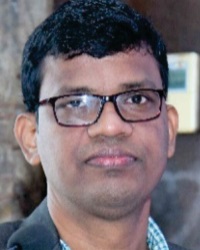
Dr. Shashi Bhushan Arya
Associate Professor
|
Topic:
Hot Corrosion of Thermal Barrier Coating
Affiliation:
Associate Professor Dept. of Metallurgical and Materials Engineering National Institute of Technology Karnataka (NITK), Surathkal, Mangalore,
Abstract:
Thermal barrier coatings (TBCs) are deployed in gas turbine components to offer thermal insulation and to protect from material degradation mechanisms at higher temperatures. The TBC systems are subjected to high-temperature oxidation, hot corrosion, and solid particle erosion, which may lead to the failure of coatings and subsequent component failure.
Hot corrosion refers to the severe chemical attack on the component surface due to the elements like Na, S, Cl, and V, which originate from the fuels and molten ash in the operating environments. The coatings may present a porous structure with cracks after exposure to hot corrosion conditions. The resistance of a system towards hot corrosion depends on the overall chemistry, reactivity, high-temperature stability, and surface conditions of the coating.
The rare earth aluminate Sm2SrAl2O7 was synthesized in the laboratory through a molten salt synthesis technique. A thermal barrier coating system on Inconel 718 substrate was developed with Sm2SrAl2O7 as the top coat and NiCrAlY as the bond coat using atmospheric plasma spraying. High temperature corrosion test in aviation and marine corrosive conditions and oxidation examination were performed to see the stability of TBC. An interesting result were noticed with respect to conventional TBC material Yttria Stabilized Zirconia (YSZ)
Biography :
Dr. Arya completed his B-Tech (Metallurgical Engineering) MNIT Jaipur and PhD (Corrosion Science Engineering) Indian Institute of Technology Bombay. Currently he is working as Associate Professor at Dept Metallurgical and Materials Engg., at National institute of Technology Karnataka (NIT-K) Surathkal, Mangalore.
Total 20 years of experience related to, Corrosion and Metallic passivation, Thermal barrier coatings (TBC), antimicrobial Nano-composite coatings, Aging and degradations Li-ion battery, Corrosion of metallic artifact, Utilization of industry waste.
He has supervised 55 MTech students and 5 PhD. Presently he is guiding 7 PhD.
|
|
|
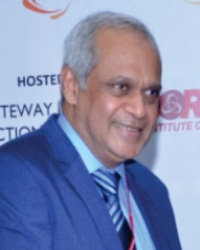
Shailesh Javia
Senior Principal Scientist
|
Topic:
“Above Ground Storage Tanks and Mounded Storage Vessels – Cathodic Protection challenges and solutions”
Affiliation:
Senior Principal Scientist Surface Engineering Division CSIR-National Aerospace Laboratories
Abstract:
External corrosion of tank bottoms and mounded storage vessels is a significant problem for Owners for both economic and environmental reasons. Corrosion Protection of Above Ground Storage Tanks is typically provided by cathodic protection (CP). In this presentation we will discuss some newer trends in ASTfoundation and cathodic protection systems.
Some of the challenges of Cathodic protection for AST and Mounded storage vessels include improper design, poor installation, inferior quality materials, insufficient planning and other factors. This presentation looks at some of the challenges and solutions for cathodic protection systems.
With booming infrastructure and construction of new tanks and mounded storage vessels it is imperative to reduce corrosion risks. The landmark Cost of Corrosion Study published by the U.S. Federal Highway Administration estimated that the annual direct cost of corrosion for above ground hazardous material storage tanks (ASTs) in the US was ~$4.5 billion.
Biography :
An Electronics Engineer who has spent 30+ years focused solely on corrosion Engineering and Cathodic Protection Systems. Presently working with MATCOR Inc. and based in USA Mr. Shailesh is associated with international business and Engineering department.
Mr. Shailesh has developed expertise in the application of turnkey cathodic protection and technical sales. In his career, he has developed a diverse portfolio designing CP systems and managing turnkey CP Projects for Cross country pipelines, Plants like Refineries, Fertilizers, Petrochemicals, Power plants, Tank bottoms, Tank and vessel internal CP, City gas pipelines, post commissioning Survey works and handled complex interference problems on cross country pipelines.
Mr. Shailesh has been certified as AMPP/NACE Cathodic Protection Technologist (CP 3), successfully completed AMPP/NACE Direct Assessment Course, and has presented papers at AMPP/NACE conferences in USA, India, Spain, Kuwait, Abu-Dhabi, Bahrain, Malaysia, and Thailand.
Mr. Shailesh has been awarded with Corrosion Awareness award in 2016 for “Excellence in Corrosion Science and Technology in Oil and Gas” by NACE International Gate Way India Section.
Mr. Shailesh Graduated from Amravati University in India with BE in Electronics Engineering.
|
|
|
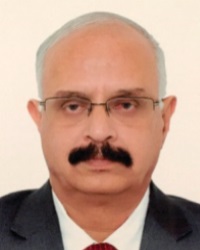
Visvanathan Sivaraman
Managing Director
|
Topic:
In-situ Metallography- an effective but often misused corrosion inspection technique and future of corrosion control and testing
Affiliation:
AARVIK Metallurgical & Corrosion
Services Private Limited
Abstract:
A metallography technique known as replication allows characterization of microstructures non-destructively. If used properly, many metallurgical and corrosion damage mechanisms can be effectively identified and inspected in refineries, petrochemical and power plants. Replication has been used to determine the phases in the material and their relative amounts, to examine the microstructural features such as grain size, grain boundaries, carbide particles, graphite sizes and their distribution, and pearhtic lamellae, and to record high temperature phenomena such as creep cavities, spheroidisation and precipitation of alloying elements solid solution. As well replication has been used to identify the location, nature (e.g., fatigue, stress corrosion intergranular), and origin of cracking: it has also been used to follow the progression of a microstructural feature over time (e g crack propagation, creep cavity formation). Indiscriminate use of replication is prevalent due to the lack of understanding of expected damage mechanisms. Use of appropriate tools for replication and training and certifying the technicians by way of regulatory requirement is a must.
We can visualize new vistas in corrosion control and testing as a result of significant research and development taking place in the developments of:
Advanced Coatings and Surface Treatments, Smart Corrosion Monitoring, Corrosion Inhibitors: Electrochemical Techniques: Machine Learning and Data Analytics: Corrosion Testing Standards: Corrosion-Resistant Alloys: Biocorrosion and Microbial Influences: Corrosion Education and Training:
Biography :
Mr Visvanathan Sivaraman is a professional senior metallurgist, AMPP member of 25 years. An AMPP certified Senior Corrosion Technologist and Refining Corrosion Technologist and API 571, 577, 580 and 578 certified person having more than 40 years of experience in material testing, metallography, failure investigation, corrosion testing, quality assurance and control, welding, nondestructive testing and replica metallography, risk-based inspection and RLA catering to the needs of refineries, petrochemical, powerplants throughout theMiddle East and India.
Started his career with BHEL, Tiruchirappalli and after many assignments in European inspection companies, worked as a regional manager for Elements- a world-renowned material testing laboratory in UAE before starting his own company in the free zone of UAE. Appointed as an authorized trainer for replica metallographic technique by Struers, Denmark
PAPERS PRESENTED:
“Remaining Life Assessment –An overview and the Role of Metallographic Methods” at the first Middle East Nondestructive Testing Conference during September 24-26, 2001 in Bahrain.
“Four types of heat exchanger failures” at the 2005 Inspection Technical Exchange Meeting during December 12th and 13th 2005 conducted by Saudi Aramco, Saud “Invited guest speaker on “Responsible use of replica metallography” at international conference organized by ISNT Mumbai, during 19-21 December 2018
|
|
|

Dr. Smrutirekha Mishra
Assistant Professor
|
Topic:
Hybrid polymeric coatings for early detection of failure due to corrosion
Affiliation:
Assistant Professor (Materials and Polymer Engineering Department) Institute of Chemical Technology, Bhubaneswar
Abstract:
Corrosion, the gradual degradation of materials due to chemical reactions with the environment, remains a pervasive challenge across numerous industries. The early detection of corrosion is essential to prevent costly structural failures and ensure the longevity of critical infrastructure. Hybrid polymeric coatings, which combine the benefits of multiple materials, have emerged as a promising solution to this problem. Here we explore the recent advancements in the development of hybrid polymeric coatings specifically engineered for early detection of corrosion-induced failure. Traditional corrosion protection methods rely on passive barriers that delay the onset of corrosion but may not provide early warning of the damage occurring beneath the surface. In contrast, hybrid polymeric coatings integrate functional components, such as corrosion indicators, smart polymers, or nanoparticles, within the coating matrix.
The mechanisms and materials used in hybrid polymeric coatings, including the incorporation of corrosion-sensitive species, such as pH-sensitive indicators or corrosion inhibitors, and the utilization of state-of-the-art nanotechnology to enhance detection sensitivity. Hybrid polymeric coatings hold great promise in revolutionizing corrosion protection by providing early and reliable detection of degradation before structural integrity is compromised. These coatings offer a proactive approach to corrosion prevention, allowing for timely maintenance and reducing the economic and safety risks associated with corrosion-induced failures. As technology advances and interdisciplinary collaboration grows, the development and implementation of these coatings are poised to significantly enhance the resilience and sustainability of infrastructure in diverse sectors, including transportation, energy, and manufacturing.
Biography :
Dr. Smrutirekha Mishra is currently working as an Assistant Professor in Department of Materials and Polymer engineering at Institute of Chemical technology-Indianoil Campus (ICT-IOC) Bhubaneswar. She holds a PhD degree in material sciences and engineering and her masters and bachelors in Plastic and polymer engineering. She has also worked at NCTU Taiwan as a visiting scientist especially focusing on Hydrogen storage and release applications using polymer composite systems. Some of her research areas are surface engineering, polymeric coatings and plastic recycling. Focusing on her research she is working jointly in industrial projects funded by TATA Steels, DRDO and NALCO. She has also acted as the “University Coordinator” for opening of Taiwan Education Centre in collaboration with NTHU Taiwan and KIITunder Ministry of education Taiwan and Ministry of Education India.
Apart from this she has a keen interest on developing of different coating systems for hydrogen storage and its large scale applications in storage tanks.
|
|
|
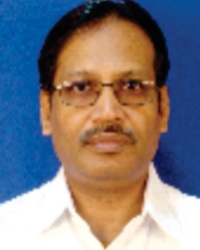
Ravi R Sahaya
Associate Director
|
Topic:
Flow assisted corrosion in nuclear industry
Affiliation:
Associate Director (MAED & Simulator) Directorate of Engineering – Light Water Reactors, Nuclear Power Corporation of India Ltd.
Abstract:
Flow-accelerated corrosion (FAC) is a matter of concern for the Nuclear Power Plants as it may cause severe damages, long term outages and consequent financial loss. The FAC phenomenon depends on the various parameters i.e. Flow conduit geometry, Flow conditions, conduit material, fluid pH fluid temperature, etc. In order to provide early predictions and thereby preventing failures, well validated predictive numerical tools, incorporating all the necessary parameters, is necessary for determining the FAC rate and the influenced locations in a given system. Application of Computational Fluid Dynamics (CFD) techniques to study and identify the influence of various parameters has proven to be beneficial. It has provided reasonable insight into the localised flow effects and its influence on FAC. The present paper presents some case studies in this aspect
Biography :
Shri R R Sahaya is Associate Director (MAED & Simulator), Directorate of Engineering-LWR, NPCIL. He graduated is a Chemical Engineer from NIT Durgapur. He joined NPCIL in 1988 and has since then worked in the areas of hydraulic studies for nuclear reactor systems, and nuclear reactor related safety analysis and safety studies. His specific work area include Containment Analysis, Hydraulic studies including application of Computational Fluid dynamics (CFD) to design and safety related studies. One of his important area of CFD application has been for Flow Accelerated Corrosion (FAC) studies related to process system /piping materials in order to predict the susceptibility/occurrence of FAC.
|
|
|

Christopher Do
CEO
|
Topic:
Applications of Robotics in Asset Integrity Management of Oil & Gas Assets
Affiliation:
Group CEO of IEV Group Sdn Bhd
Abstract:
This keynote presentation offers a comprehensive exploration of Robotics' current role in enhancing Asset Integrity Management for both onshore and offshore floating assets. The discussion will encompass a wide array of robotics applications within the inspection domain. This includes the utilization of Mini-ROVs for inspecting both fixed and floating assets, Autonomous Underwater Vehicles (AUVs) for conducting pipeline and seabed surveys, ROV-deployed robotics designed for external pipeline defect verification, crawlers tailored for inspecting offshore rigid and flexible risers, tank in-service cleaning and inspection, as well as drone-based mapping for buried pipelines, including those at river crossings.
Furthermore, we will delve into the diverse range of maintenance applications enabled by robotics, such as the application of anti�corrosion coatings and wraps for oil and gas assets. The presentation will also touch upon emerging trends and future developments in this dynamic field.
Biography :
BE in Mechanical Engineering (1st class honors), New South Wales University, Australia
Development, Integration and Commercialisation of Disruptive technologies for Asset integrity Management of offshore and onshore assets in energy industry.
Inventor of “ocean-powered” marine growth control technology Former CEO of IEV Holdings Ltd, a public listed company in Singapore Founder and former board member of CNG Vietnam Joint Stock Company, a public listed company in Vietnam Founder and Executive Chairman of NanoViz Sdn Bhd, a developer and global distributor of nano-based products
|
|
|

DR. AMIT BHATTACHARYA
Director
|
Topic:
Is it MIC? a detective approach to explore whats inside story
Affiliation:
Director-technology & innovation Texiza laboratories limited
Abstract:
Microbial influenced corrosion or MIC is one of the leading problems that eats up silently majority of time, energy, labor and margin for the Oil and Gas institutions. It a largely known problem now but with unknown sets of variables and causes and limited sets of true measures. To relate the corrosion with MIC, one has to take a ‘SMART’ approach that provides data which correlated biological indicators with non -biological findings. Correct approach in finding results in correct approach in mitigating or
delaying the MIC
Biography :
Holds PHD in Microbiology, solving microbial problem in majority of industries for two decades. Was associated with world best chemical companies like Dow and Dupont more than 12 years serving the field of monitoring of microbes and framing their mitigation strategies. Published dozens of articles in scientific magazine and international journals in the field of O&G, Pulp and Paper, Paints and Coating, Animal Nutrition and Hygiene. Delivered more than 150 lectures to educate industry on impact of microbial growth, accurate monitoring and mitigation strategies. He was receiver of NASA brief tech award, Shyama prasad Mukherjee award and associated with many industrial forms.
|
|
|
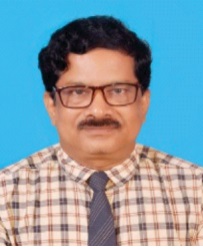
Dr. T K Mahato
Scientist
|
Topic:
Specialty corrosion preventive functional coatings for Marine platforms
Affiliation:
Scientist Naval Materials Research Laboratory Ambernath, Thane, Maharashtra, INDIA-421506
Abstract:
Marine grade steel is used in construction of ships and submarines. From strength to cost ratio point of view, there seems to be no substitute for steel as material construction.
Unfortunately, in corrosion resistance scale this material lies at the bottom place and requires to be protected. Corrosion preventive are the most economical method to protect steel from corrosion. The external areas of structures operating in marine environment are encountered with stringent climatic conditions such as splashes of seawater, UV radiation and deposition of salt laden mist whereas internal areas or compartments experience very high humidity. The coatings applied on these structures must be resistant to these conditions. Apart from this, coatings applied in certain areas require resistance to chemicals in addition to other properties. Presently different areas of a ship or off-shore structures are coated with specific paint systems to protect the structure from corrosion. Protective technologies for naval platforms like ships and submarines through coating technologies and electrochemical techniques have been the core strength of NMRL. In the area of coatings, the Indian Navy has inducted several types of coating systems which include state of the art anti-corrosive paints, non-skid paints for flight, helo and weather decks, superstructure paints for ships, paints for battery pit, intumescent fire retardant paint self-cleaning coating, bilge coating, underwater applicable paints, elastomer coatings etc. To enhance the performance of coatings on underwater hull, electrochemical techniques such as cathodic protection through sacrificial anodes and impressed current cathodic protection have been perfected, which have also been inducted by the Navy. The total fleet is today operating with these home grown protection technologies, leading to increased availability of Naval platforms for operational requirements. These technologies can also be used by merchant ships and other structures operating in marine environment.
Biography :
Dr. Tapan Kumar Mahato studied Master of Science in Chemistry at IIT Kharagpur during 1988-1990, Master of Technology in Polymer during 1990-1992. He obtained his Ph.D. in
Bio-organic Chemistry in 1998 from Indian Institute of Technology, Kharagpur. In 1996, he joined IAT, Pune, DRDO as Scientist-B and in 1996 moved to Naval Materials Research
Laboratory (NMRL), Mumbai. He was awarded BOYSCASTE fellowship to pursue his post�doctoral R &D work on liquid crystalline polymer at University of Bremen, Germany during
2002- 2003. He is Scientist-F and heading Protective Coatings Division at NMRL, Mumbai, Ambernath-421506, DRDO, INDIA. He is Specialized in Polymer, Synthetic Bio Organic
Chemistry and Marine Protective Coatings. Presently he is engaged in R & D of Marine Coatings, more than 27 years’ experience in marine paints as well as in synthesis & characterization of resins/polymers for application in marine environment. His current research interest includes specialty corrosion resistant functional organic coatings for application over superstructure, interior compartments and underwater hull of Naval platform as per user requirements. He has over 45 publications in the International and National Journals, Conference, Seminar & Symposia. He has over 16 Indian patents to his credit. He has over 7 TOTs to Industry for bulk production orders. He is a Member of The
Society of Polymer Science, India. He is a member of Bureau of Indian Standard. He has the following honours & awards to his credit i) Technology day oration medal 2011 1i) Technology group award 2013 for development of anticorrosive and antifouling paint compositions for underwater applications iii) Technology group award 2020 for development, induction in service and ToT of Self-cleaning coating iv) Laboratory scientist of the year award 2021 v) Handing over of LAToT of NMRL developed hydrophobic potting material in 2022 in presence of Honourable Defence Minister vi) 11th National Petrochemicals award 2022 under category: Innovation in polymeric materials for Self�cleaning polydimethyl siloxane epoxy stratified coating for Naval application. Currently he is at NMRL, Mumbai, Ambernath-421506 and heading Protective Coatings Division.
|
|
|
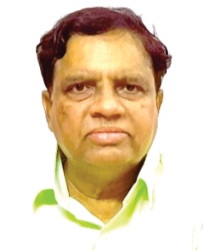
T Subba Rao
OMR
|
Topic:
Microbial Biofilm Mediated Metal Interactions and Corrosion
Affiliation:
School of Arts & Sciences, Sai University, Paiyanur, OMR, Chennai, Tamil Nadu - 603104, India
Abstract:
Natural water bodies are present in several forms: oceans, large and small lakes, and a diversity of rivers and streams. All these ecosystems feature a unique conglomeration of aquatic biotas that are profoundly dependent on the degree of water quality. Based on the type of cooling system, natural water is the preferred medium for cooling in many industries. Therefore, large chemical industries and power plants are located near coastal areas or on the banks of big rivers, so they can utilize these abundant water resources. The cooling water requirements (type and volume) vary with the industrial unit. Industrial water distribution systems that use freshwater/seawater are influenced by biofouling events. Based on the power plant capacity, large surface area heat exchangers are used for industrial cooling, particularly to remove the heat from the condensers. Therefore, industrial cooling water systems are vital for power production as well as in the performance of a process plant. Biogrowth inside condenser tubes and the tube sheet of a cooling water system is a serious problem, since it causes unwanted effects, like loss of heat exchanger efficacy, blocking of the cooling system pipelines and impairing the overall performance of the industrial unit. This will reduce plant reliability over a period of time, and leading to occasional plant shutdowns.
Biography :
Prof. Toleti Subba Rao is currently the Professor of Biological Sciences, as well as the Director of the Centre for Research, Innovation, Collaboration & Policy at Sai University, OMR, Chennai, Tamil Nadu-603104. Before joining Sai University in 2022, Prof. Rao had served at Bhabha Atomic Research Centre, Department of Atomic Energy (DAE), Government of India for 34 years from 1988 to 2022, as Scientist – H, & Head – Biology Group, as well as Professor at Homi Bhabha National Institute, DAE, Mumbai. Prof. Subba Rao is an internationally acclaimed academician and researcher who is listed in the top 2% of the world’s influential researchers, according to a study published by Stanford University, USA. As a researcher with over 210 research papers and 2 patents, he has accomplished many targets for Department of Atomic Energy. Prof. Rao is a co-investigator in many joint research projects with Anna University, Alagappa University, and the University of Madras. Besides, in education, he has the highest academic degree D.Sc. from Periyar University, Salem, Tamil Nadu. Prof. Rao is also well known for establishing a major national coordinated research program on Thermal Ecology in the country. For his accomplishments, Dr. Rao has been elected as a Fellow of the Academy of Sciences, Chennai, and a Fellow of the Applied Biotechnology Society of India. Nine Ph.D., scholars have graduated so far under his supervision and are working in academic institutions, and industries in India and abroad. Prof. Subba Raosresearch and leadership contributions have been recognized with over 6 awards and honours in the country and abroad. Prof. Rao serves on the Editorial Advisory Boards of a few journals and as a reviewer for many international journals. Dr. Rao has delivered over 60 Plenary, Keynote, and Invited lectures all over the world. Besides his regular teaching and research activities at Sai University, Prof. Subba Rao serves as a member of multiple committees related to Education, Research, and Innovation programs.
|
|
|
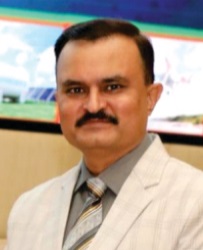
Mr. Sandeep H. Vyas
Sr. General Manager
|
Topic:
Emerging Technologies in Pipeline Industry
Affiliation:
Sr. General Manager, Reliance Industries Limited
Abstract:
Key attribute of emerging technologies features in the emergence of novel technologies. These are: (i) radical novelty, (ii) relatively fast growth, (iii) coherence with peripheral systems (iv) prominent impact, and (v) uncertainty and ambiguity. However, each innovation have initial phase of acceptance or rejection; which is critical for any new thing to survive and been to adoptive mode and to reach at system integral level.
For pipelines, we now a days started talking of smart pipelines; to go in smart mode or to make it intelligent; there are many innovations in already started implementation or in emerging innovation stage; such as PIDS, Wireless transmitters connectivity, Wireless Outdoor CCTV camera’s, Augmented Reality Based Testing (ARBT), Drone patrolling, and Satellite based infrared imaging technology for pipeline leak detection technologies etc. to name few of them and many more are all in emergence stage for pipeline industry and have got huge potentials in coming days and years to come. Adding Artificial Intelligence to pipelines also can add intelligent monitoring for predictive maintenance, safety, system reliability and longevity.
Biography :
Having 28+ years pf experience in field related to Corrosion, CP, Coating, Integrity, Project Management, Pipeline Operations, Auditing etc. and worked for more than 75 different projects.
Qualified with NACE CP level – II, B.E. Electrical, PGDM, have electrical Inspector license and Qualified ISO 9001 Auditor.
Member of several Technical and organizing Committees for Codes, Standards, Regulations, Conference and training including Reliance Pipelines, AMPP India, ASME PSD and ASME 31.8 Committees, BIS MTD 24, OISD., PNGRB etc.
Achievements of past few years:
Published 21 technical papers in difference conferences.
· “Excellence in Corrosion Technology award” 2010 by NACE India Section.
· Finalist in MP Corrosion Innovation award for innovative CP Design 2011.
· Alumina of International Visitor Leadership progremme (IVLP) – 2015 with theme of “Adoption of American Anti-Corrosion Standards” -by United States Department of State and Bureau of Educational and Cultural Affairs.
Excellence Award for ASME PSD - ASME IOGPC -2017 conference.
· Gujarat “Brahma Gaurav Award” by Brahmin Community – 2018-19. “Meritorious Contribution in field of corrosion science and technology, Industry” award by NIGIS in 2019.
|
|
|